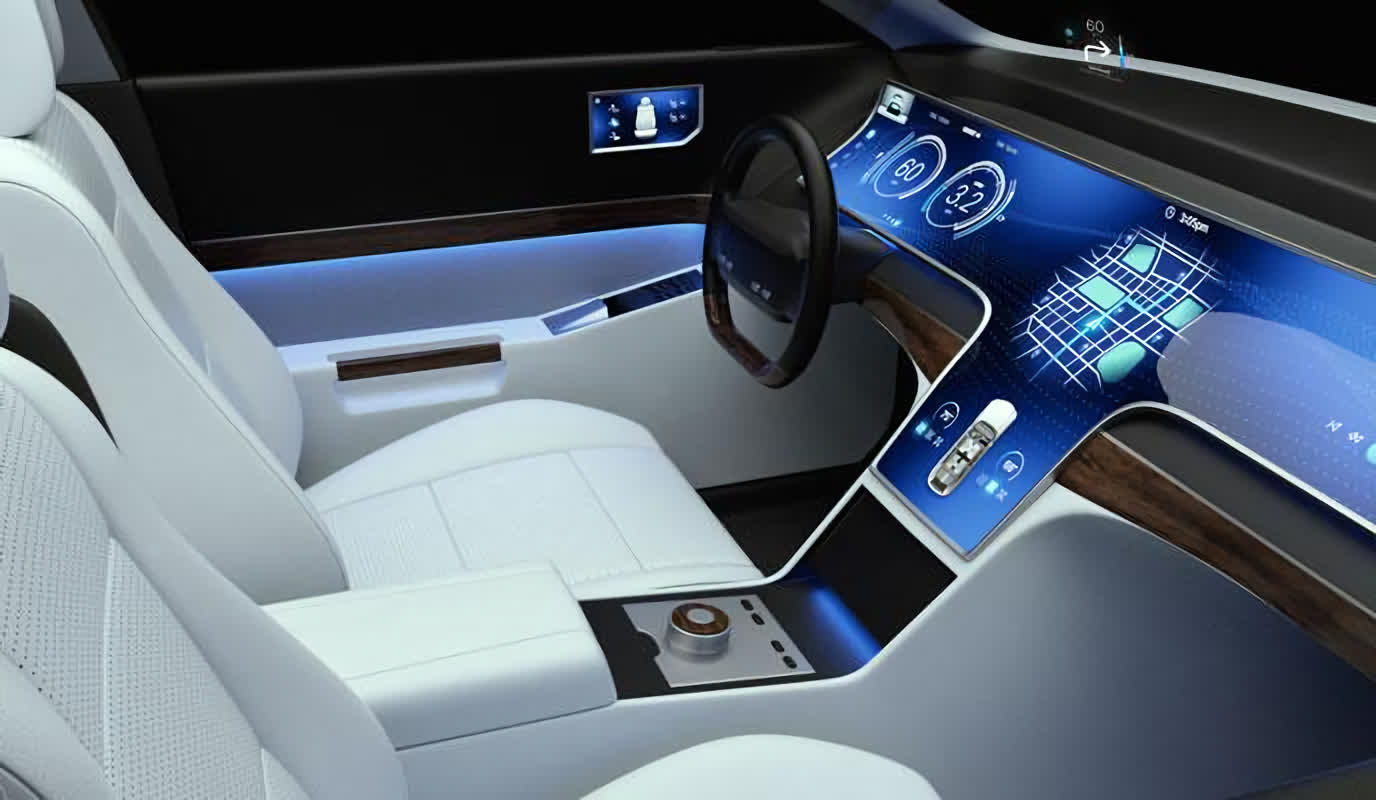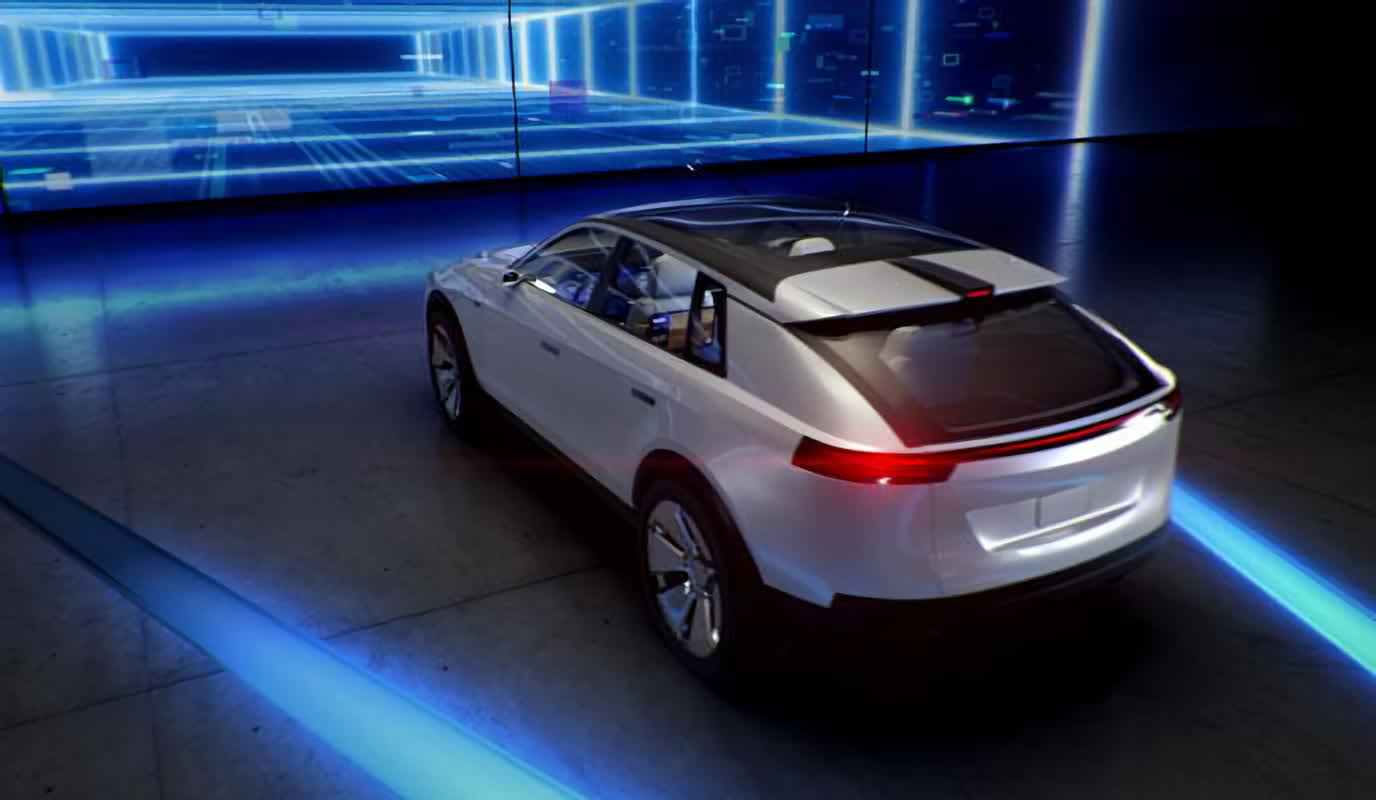Qualcomm aims to serve next-gen cars with Snapdragon Ride Vision and Digital Chassis
In context: Over the last several years, some of the most intriguing developments to come up out of CES have been automobile related. From information-rich cockpit experiences to promises of assisted and autonomous driving, much of the headline-generating news from the last few shows has centered on the automobile. In fact, many take argued that the auto industry is morphing into the adjacent big segment of the tech concern.
Companies like the Intel's Mobileye, graphics giant Nvidia, and Qualcomm are all using CES 2022 to announce their newest offerings for the automotive manufacture, also equally important new partnerships with car makers and automotive suppliers.
In the example of Qualcomm, Snapdragon Ride Vision brings a new degree of simplicity and focus to automakers looking to offering safety-focused, estimator-vision powered ADAS (Advanced Commuter Assistance Systems) capabilities to a broader range of cars, while the Snapdragon Digital Chassis taps into the demand for completeness and flexibility in advanced automotive computing solutions.
Digital Chassis provides a framework that can combine the company's Snapdragon Ride assisted and autonomous driving platform, Snapdragon Cockpit for multi-screen infotainment, Snapdragon Auto Connectivity for 5G and 4G LTE external connections besides as WiFi and Bluetooth internal connections, and Snapdragon Automobile-to-Cloud services to enable new functionality and business models for connected cars.

While Qualcomm introduced many of these offerings earlier, with Digital Chassis it's calculation the software that allow the pieces to easily integrate and interoperate. For car companies looking to find a technology partner for a consummate, continued, digital car experience, Digital Chassis looks to be an intriguing and potentially attractive pick.
Modern cars are enormously complex beasts, and as many automakers and suppliers take learned over the last few years, adding multiple, avant-garde technology offerings into the mix is proving to be more challenging than many initially expected. And so, whatever efforts to simplify the procedure by substantially "pre-integrating" diverse pieces (not only Qualcomm's, but its software partners' too) can be considered a positive step forward. This is peculiarly true for newer auto companies that take a modern, complete motorcar system arroyo to design and manufacturing.
At the aforementioned time, equally car industry veterans and close industry watchers empathise, the componentized way that many cars from traditional automakers are designed and built can arrive difficult for this kind of consummate solution to work—despite its potential elegance from a pure engineering science perspective.
That's why Qualcomm is offering the flexibility of letting automobile makers mix and match different sub-elements of the Digital Chassis framework and then that, for example, a car maker could utilise a Qualcomm solution ADAS, just a unlike vendor's solution for infotainment.
To that end, Qualcomm has also added more open up interfaces to its various services as function of the Digital Chassis effort to enable more customization options. This as well allows carmakers to, for example, use their own custom-developed driving stack software or leverage the software that Qualcomm provides.

In addition, with the broadening of its auto-to-deject services options—not to mention its 20-year+ history of telematics and other connectivity solutions to machine makers via its modem concern—Qualcomm hopes to create service-based business models. The idea is to allow carmakers to generate revenues after the car has been sold for things like feature upgrades, new content services, etc., that consumers would pay for, potentially providing a new revenue stream for all parties involved.
On the partner side, Qualcomm recently introduced a deal with BMW to power several of the Digital Chassis capabilities starting with the 2025 model year, and at CES, the company appear new efforts with Volvo, as well equally expanded work with Honda, Renault, GM, Tier ane supplier Alps and several Chinese carmakers.
Qualcomm besides announced the debut of Snapdragon Ride Vision, expected to be in vehicle production by 2024. Powered by a new 4nm-based Snapdragon SoC and partner Arriver's computer vision software, Snapdragon Ride Vision is positioned in part as a competitor to Mobileye's offerings.
Information technology tin be paired with widely available cameras to create a simple, yet very functional, system to bring disquisitional safety-related features to fifty-fifty entry level cars. It can too be scaled up to provide semi-autonomous Level ii and iii driving capabilities when paired with Qualcomm's existing Snapdragon Drive SoC and Bulldoze Accelerators, along with boosted sensing technologies like radar and lidar.
Solutions like Snapdragon Ride Vision are focused on key functional safety benefits that consumers actually desire—such as automatic braking, object detection and abstention, lane keeping and lane changing, automated highway driving, commuter monitoring, etc.
One of the challenges that has plagued the motorcar industry's implementation of potentially game-changing fully autonomous driving technologies is that many early efforts that received a bully deal of attention were essentially trying to boil the ocean. They grossly overpromised and underdelivered on what they could practice, and that has led to both dramatically longer timelines and significantly revised expectations for autonomous cars.
Even if those early efforts did work, it turns out they were promising capabilities that a big bulk of consumers didn't even want. Solutions similar Snapdragon Ride Vision, on the other hand, are focused on key functional safety benefits that consumers really want—such as automatic braking, object detection and avoidance, lane keeping and lane changing, automated highway driving, driver monitoring, etc. In addition, these can exist scaled up to more practical and more technologically realistic levels of democratic driving for those who want to explore them.
Snapdragon Ride Vision Arrangement offers open software interfaces via the Snapdragon Ride SDK and gives automakers, or their suppliers, the ability to customize to their unique needs and preferences. For automakers that want to exist able to extend the value and uniqueness of their make into a motorcar'southward digital experience, this is crucial.
Taken together, the Snapdragon Digital Chassis and Ride Vision offerings highlight the continued evolution of Qualcomm's efforts for the automotive manufacture. Though many still think of the company as mobile device focused, it's clear that Qualcomm'southward vision of mobility is expanding to a much broader world.
Bob O'Donnell is the founder and main annotator of TECHnalysis Research, LLC a engineering consulting firm that provides strategic consulting and market place research services to the technology industry and professional financial customs. Yous tin can follow him on Twitter @bobodtech.
Source: https://www.techspot.com/news/92864-qualcomm-aims-serve-next-gen-cars-snapdragon-ride.html
Posted by: buckleysurnoted1978.blogspot.com


0 Response to "Qualcomm aims to serve next-gen cars with Snapdragon Ride Vision and Digital Chassis"
Post a Comment